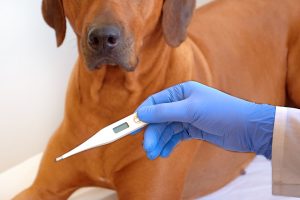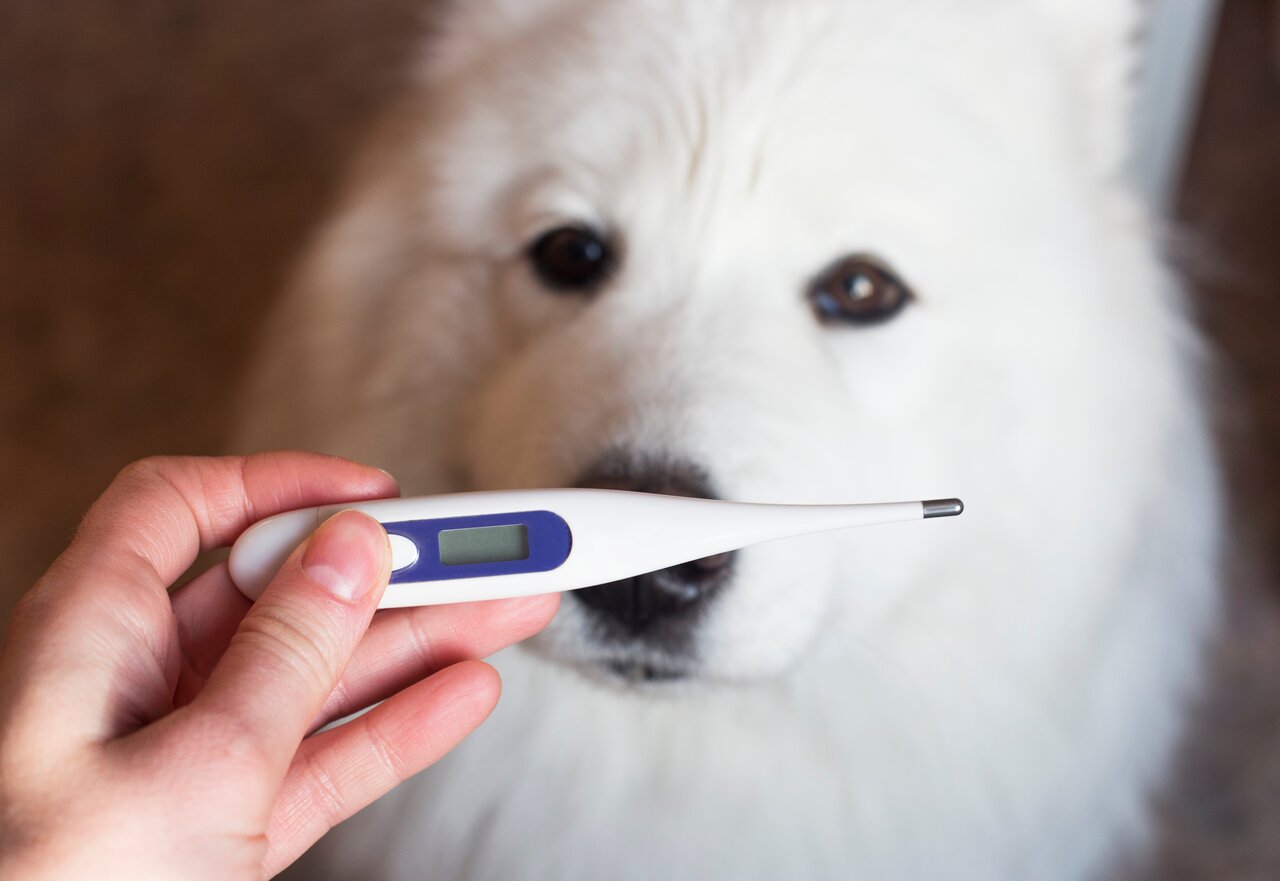The normal body temperature in humans is 37°C (98.6°F). While the normal body temperature in cats and dogs is 38.3 to 39.2°C (101.0 to 102.5°F). Some pets and people will maintain a temperature baseline that is slightly below or above the average. But when your cat or dog’s temperature has risen above 40.0°C (104°F), or fallen below 37.2°C (99°F), it is recommended to take the pet to a veterinarian as soon as possible.
What Is Considered an Abnormal Temperature In Dogs And Cats?
Unfortunately, there isn’t an easy checklist you can use that indicates hypothermic (low) or hyperthermic (high) body temperatures. However, there are a few common signs that you can look out for:
- Hypothermic dogs or cats usually appear less alert and more lethargic. They may also tremble or shiver.
- Hyperthermic dogs or cats may pant to lower their body temperature, and the gums of the animal may turn dark red.
Since these are signs that often occur with a range of medical issues, it is impossible to determine if the pet is hyper/hypothermic by just looking at the animal. You will need to take your pet’s temperature to check if their temperature is abnormal.
What Type Of Thermometer Should You Use To Take Your Pet’s Temperature?
The only accurate method to establish whether your cat or dog has a low or high body temperature will be to use a thermometer. The two main thermometer types include the rectal and the digital. The rectal thermometer will be inserted in the rectum of the animal, while the digital thermometer is placed in the ear canal. It is important to realise that cats and dogs will often resist either option, which can make it challenging to obtain an accurate reading.

Tips On How To Take Your Pet’s Temperature
Regardless of whether you use a digital or rectal thermometer to take your pet’s temperature, this will usually require a two-person task. One person will be needed to restrain and comfort the pet at the same time. Small dogs and cats should be held down on your lap, using one arm under the animal’s neck to hold the head closely against the body. The other arm should go around the animal’s abdomen to hold the animal still. Large dogs can also be held down in a similar way on the ground.
If you are using a digital-aural thermometer, the pet can stand up. When using a rectal thermometer, the standing animal will usually try to sit down once the thermometer is inserted into the rectum. If you are using one of these thermometers, it is better to lie your pet down on one side before you insert the thermometer.
If you find that taking your dog or cat’s temperature is too challenging, avoid risking injury to the animal or yourself. If this is the case, you should take your pet to a veterinary hospital where trained professionals will be able to assist you further.
What Should You Do When Your Cat Or Dog’s Temperature Is Lower Or Higher Than Normal?
To begin with, double-check all abnormally low or high-temperature readings. A falsely elevated temperature can occur when the animal is agitated or over-excited. Cats or dogs that are resisting restraint can also have elevated temperatures that don’t actually mean that they have a “fever”.
Final Thoughts
If you double-check the temperature of your pet and it remains low or high, take your pet to a vet. Keep in mind that temperatures above 40°C (104°F) or below 37.2°C (99°F) should be regarded as an emergency. It is also important to keep your pet as calm and relaxed as possible before taking a temperature reading. If the temperature is too high, cool your pet down with a cool towel, and when the temperature is too low, wrap the animal up in blankets.
If you have any concerns about your pet, please do not hesitate to call Toorak Road Vet Clinic today on (03) 9809 2700 or make an appointment.

